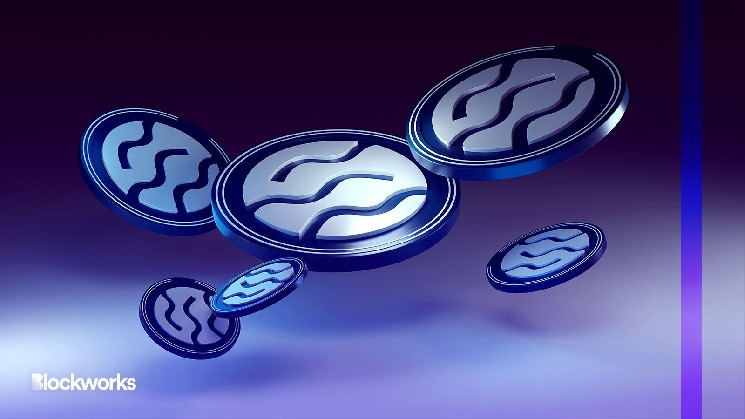Sei Network, With $70M in Ecosystem Funding, Looks East

After securing a total of $70 million in ecosystem funding in just eight months since its inception, Cosmos based DeFi Layer 1 blockchain — Sei — is looking to expand into Asia in the year ahead.
When the network first launched, the projects which joined Sei were mostly ones who were bullish on the core technology, co-founder Jayendra Jog told Blockworks. But, since the Terra implosion and the collapse of FTX, Sei began seeing an influx of teams coming from different ecosystems.
Now, with over 100 projects developing on the blockchain, Jog wants to expand the presence of his network into Asian markets, citing the region’s technological advancements and high rate of crypto usage, as well as the presence of exceptional developers.
“Crypto is already very big in Asian markets overall — South Korea, for example, has a ridiculously high rate of people using crypto in general…there are also exceptional developers, a lot of them are building stuff in crypto more broadly, we want to help get the word out about Sei, so they can build the best possible products for their users on top of this infrastructure,” he said.
The company has taken several steps towards this goal, including partnering with Graviton, a Web3 accelerator based in India, and launching a world tour for the crypto community to meet in person.
So, What is Sei?
Sei is the brainchild of ex-Goldman banker Jeff Feng and Jog, a former Robinhood software engineer who has been involved in the cryptocurrency industry since 2017.
Jog said that he was motivated to create Sei after observing poor communication and lack of transparency at Robinhood following the GameStop stock trading frenzy in 2021.
“This is what we wanted to build a decentralized Robinhood originally, but are no longer doing that,” Jog said. “Through the process of building an exchange, we realized that the infrastructure to build exchanges is lacking, which is the problem Sei is solving.”
As Sei is not an exchange, and only an L-1 chain, it does not compete directly with projects such as Osmosis, Crescent and other dexes on the Cosmos.
“Sei is only building the infrastructure, and no exchange on top. The other ecosystems are building both,” Jog said. “From a technical side, Sei has a native order matching engine built into the chain itself, which helps prevent front running through frequent batch auctions, which doesn’t happen on any of those other chains.”
As Sei is taking an ecosystem building approach, teams are encouraged to build on the blockchain layer. Jog said the network is unlikely to run into CLOB-related issues as its infrastructure has been custom built for exchange.
“We have an in built scalable native order matching engine, which makes it very cheap for market makers to provide liquidity, allows them to batch orders (so only submit 1 transaction to update orders on multiple markets), and the fastest time to finality out there (600 ms in devnet) which leads to a better trading experience,” he said.
The Sei network is built using the Cosmos software development kit (SDK) and Tendermint core. Its testnet which was launched in May last year supports inter-blockchain communication (IBC) and has already connected with a dozen chains in Cosmos.
But as with many Cosmos-based chains, Sei is a fully sovereign layer-1 network which makes use of its own validator set, Jog said. Although it does not plan to make use of the first iteration of interchain security (ICS), Jog notes that it could make use of a subsequent version ICS and mesh security.






 Bitcoin
Bitcoin  Ethereum
Ethereum  Tether
Tether  USDC
USDC  TRON
TRON  Dogecoin
Dogecoin  Cardano
Cardano  Bitcoin Cash
Bitcoin Cash  Chainlink
Chainlink  LEO Token
LEO Token  Stellar
Stellar  Litecoin
Litecoin  Hedera
Hedera  Monero
Monero  Dai
Dai  OKB
OKB  Ethereum Classic
Ethereum Classic  Cronos
Cronos  Cosmos Hub
Cosmos Hub  Gate
Gate  VeChain
VeChain  Algorand
Algorand  KuCoin
KuCoin  Stacks
Stacks  Tether Gold
Tether Gold  Theta Network
Theta Network  Zcash
Zcash  IOTA
IOTA  Tezos
Tezos  TrueUSD
TrueUSD  NEO
NEO  Polygon
Polygon  Decred
Decred  Dash
Dash  Qtum
Qtum  Zilliqa
Zilliqa  Synthetix Network
Synthetix Network  Ravencoin
Ravencoin  Basic Attention
Basic Attention  0x Protocol
0x Protocol  Siacoin
Siacoin  Holo
Holo  DigiByte
DigiByte  Enjin Coin
Enjin Coin  Nano
Nano  Ontology
Ontology  Status
Status  Hive
Hive  Waves
Waves  Lisk
Lisk  Pax Dollar
Pax Dollar  Steem
Steem  Numeraire
Numeraire  BUSD
BUSD  Huobi
Huobi  OMG Network
OMG Network  NEM
NEM  Bitcoin Gold
Bitcoin Gold  Ren
Ren  HUSD
HUSD  Augur
Augur